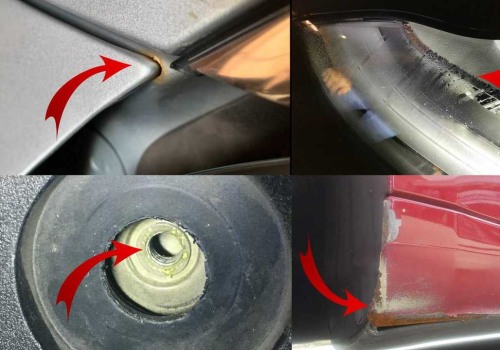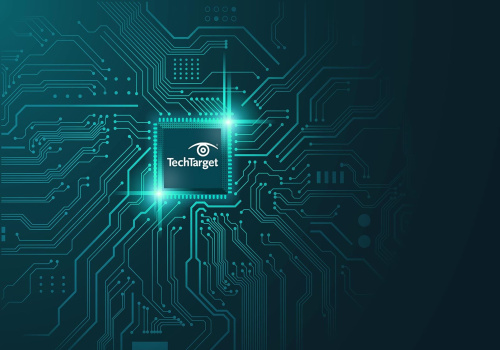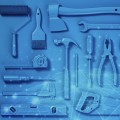It's not easy to diagnose engine problems without the right tools. Fortunately, with the help of an OBD2 scanner, you can quickly and accurately diagnose engine problems without needing to be a professional mechanic. OBD2 scanners are relatively inexpensive and easy to use, making them a great tool for car owners who want to do their own repairs and maintenance. In this article, we'll discuss how to use an OBD2 scanner to diagnose engine problems. An On-Board Diagnostics (OBD) scanner is an essential tool for any car owner.
It helps diagnose engine problems quickly and accurately, saving time and money in the process. An OBD2 scanner works by reading the data from the car's computer system and displaying it on the scanner's screen. This data can help identify issues with the engine, as well as other components of the vehicle. Using an OBD2 scanner is simple.
First, connect the scanner to the car's OBD2 port, which is usually located near the driver's seat or under the dashboard. Once connected, the scanner will display the data from the car's computer system on its screen. Depending on the type of scanner, this data may be displayed in the form of codes, graphs, or other visual representations. Using an OBD2 scanner can help to diagnose engine problems more accurately than without one.
It can read data from the car's computer system and display it on its screen in real-time, so it's easier to identify any issues. Additionally, OBD2 scanners can detect more complex problems that may be missed by other diagnostic tools. For example, if a spark plug is misfiring or a sensor is malfunctioning, an OBD2 scanner can quickly identify the issue and provide a diagnostic code for further investigation. There are several types of OBD2 scanners available on the market today.
Handheld scanners are easy to use and are ideal for basic diagnosis and troubleshooting. Bluetooth scanners wirelessly connect to a smartphone or tablet and allow for data monitoring in real-time. Professional grade scanners offer more advanced features, such as detailed diagnostics and enhanced performance monitoring. Connecting an OBD2 scanner to your car is relatively simple.
The first step is to locate the OBD2 port, which should be located near the driver's seat or under the dashboard. Once located, plug in the scanner and follow the instructions on the device's display. The scanner will then connect to the car's computer system and begin displaying data on its screen. Interpreting the data displayed by an OBD2 scanner can be a bit tricky at first. Fortunately, most scanners come with user manuals that explain how to interpret the data and what each code means.
Additionally, many scanners will provide a description for each code so that you know what it means and how to fix it. It's important to use an OBD2 scanner correctly in order to get accurate results. When connecting the scanner to your car, make sure that all connections are secure and that there are no loose wires or cables. Additionally, make sure that you are using a compatible model of OBD2 scanner for your vehicle.
If you're having trouble connecting the scanner or interpreting any codes, consult your user manual or contact a professional technician for assistance. Error codes generated by an OBD2 scanner can provide valuable information about potential engine problems. Common error codes include P0171 (for air/fuel mixture problems), P0420 (for catalyst efficiency failure), and P0455 (for a large evaporative emission leak). Interpreting these codes can help pinpoint the source of the problem and allow you to take corrective action. Using an OBD2 scanner is a great way to diagnose engine problems quickly and accurately. It can save time and money by helping you identify any issues with your vehicle before they become more serious problems.
With a bit of practice, anyone can learn how to properly use an OBD2 scanner and interpret its data.
Types of OBD2 Scanners
When it comes to diagnosing engine problems, On-Board Diagnostics (OBD) scanners can be a valuable tool. OBD2 scanners come in a variety of types, including handheld and Bluetooth scanners, each of which has its own advantages.Handheld OBD2 Scanners
Handheld OBD2 scanners are the most common type of OBD2 scanner and are easily portable. They connect directly to the car's OBD port and can be used to read and reset engine codes. They also provide detailed diagnostic information about the car's systems, such as fuel pressure, air temperature, exhaust gas temperature, and more.Bluetooth OBD2 Scanners
Bluetooth OBD2 scanners are a newer type of OBD scanner that connects to the car via Bluetooth.They offer the same features as handheld scanners, but are much easier to use as they don't require a physical connection to the car. Bluetooth OBD2 scanners are also often compatible with iOS and Android devices, allowing you to access the diagnostic information from your smartphone or tablet.
What is an OBD2 Scanner?
An OBD2 scanner is a tool that can help you diagnose engine problems quickly and accurately. It stands for On-Board Diagnostics, and it works by reading data from your vehicle's computer system. The information gathered by the scanner allows mechanics to identify the cause of any engine problems and provide the right repairs and maintenance solutions.An OBD2 scanner can read data from your vehicle's onboard computer, including engine speed, fuel consumption, fault codes, and diagnostic trouble codes (DTCs). This data helps mechanics to diagnose engine problems quickly and accurately. Additionally, the scanner can be used to reset check engine lights, adjust engine parameters, and even reprogram your vehicle's computer. The importance of having an OBD2 scanner for engine maintenance cannot be overstated. It allows you to detect issues before they become a major problem and can help you avoid costly repairs in the future.
Having an OBD2 scanner on hand also allows you to perform basic maintenance tasks such as resetting check engine lights and adjusting engine parameters.
Tips for Using an OBD2 Scanner
Using an OBD2 scanner is the most accurate and efficient way to diagnose engine problems. But it's important to know how to use one properly in order to get the most out of it. Here are some tips for using an OBD2 scanner:Check the ConnectionBefore you start troubleshooting engine problems, you need to make sure your OBD2 scanner is properly connected to your car's computer.Check that the connection is secure and that all of the cables are properly inserted. You may need to move the cables around to get a good connection.
Understand the Codes
OBD2 scanners give you a code that helps you identify what's wrong with your car's engine. It's important to understand these codes and what they mean. Most OBD2 scanners come with a manual that explains the different codes and how to interpret them.Update Your Software
It's important to make sure that your OBD2 scanner's software is up-to-date.This will ensure that it can detect the latest technology and identify any problems accurately. Many OBD2 scanners can be updated with new software online.
Run Diagnostic Tests
Once you have identified the problem, you can run diagnostic tests on your OBD2 scanner to further pinpoint the issue. These tests will provide detailed information about the issue so you can make an informed decision about how to proceed.Keep Records
Finally, it's important to keep records of any repairs or maintenance done on your car. Your OBD2 scanner can help you keep track of these repairs and maintenance by providing detailed logs and records.How to Connect an OBD2 Scanner
Connecting an OBD2 scanner to your car is a relatively simple process.First, locate the OBD port in your car. This is usually located near the driver’s side dashboard or on the underside of the steering wheel. Once you have located the port, plug the OBD2 scanner into the port. The scanner should fit snugly and securely.
Next, turn on the scanner and follow the instructions on the device’s screen. Most scanners require you to enter a few basic details about your car, such as make and model, before allowing you to diagnose any potential engine problems. Once you have entered all of the required information, you should be ready to start diagnosing your engine. When your car is connected to the scanner, it will display a variety of codes and messages that can help you identify any potential problems.
Pay attention to these codes and try to interpret them correctly. If you are unsure of what a code means, refer to your car’s manual or an online source for more information. Once you have identified the problem, you can use the scanner to reset any error codes or disable certain features that may be causing issues. This will help ensure that your engine is running optimally and that any potential problems are taken care of quickly and efficiently.
Interpreting Error Codes
When a scan is conducted with an On-Board Diagnostics (OBD) scanner, the results are displayed as error codes. These codes are standardized by the Society of Automotive Engineers (SAE). It's important to understand how to interpret these codes so you can accurately diagnose engine problems. Error codes are composed of a letter and four digits.The first letter indicates the type of code, such as P for powertrain or B for body. The first digit indicates the code's system, such as 1 for fuel and air metering or 3 for ignition system. The following two digits indicate the fault type. For example, P0300 means a misfire in the engine.
Finally, the fourth digit indicates the severity of the issue. Common error codes that can be generated by an OBD2 scanner include P0420, which indicates a catalytic converter efficiency issue; P0300, which indicates a misfire in the engine; and P0130, which indicates an oxygen sensor circuit malfunction. Having an OBD2 scanner is an important tool for car owners to accurately and efficiently diagnose engine problems. It can help you identify the source of the problem and provide you with the necessary information to troubleshoot and fix it. By having a OBD2 scanner, you can save time, money, and energy by getting to the root of the issue quickly.
Additionally, by interpreting error codes, you can make more informed decisions about what repairs need to be made. For more information about OBD2 scanners and how they work, check out these resources:
- OBD2 Scanner Guide
- OBD2 Scanner Reviews
- What is an OBD2 Scanner?







